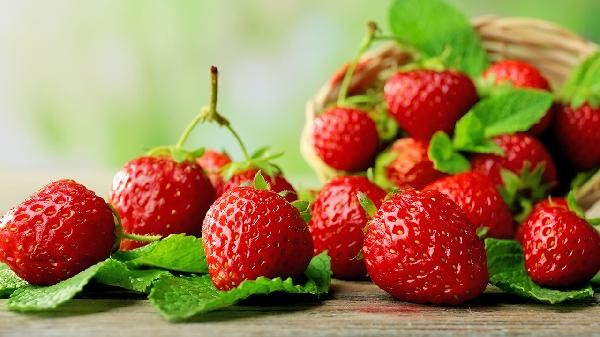Strawberries are suitable for growing vegetables such as lettuce, garlic, chives, spinach, peas, etc. They can also be paired with vanilla plants such as thyme or rosemary. These plants can form complementary growth relationships with strawberries, reduce the risk of pests and diseases, and improve space utilization.

1. Lettuce
The shallow root characteristics of lettuce avoid competing with strawberries for deep nutrients, and its wide leaves can provide shade and moisture for strawberry roots. Planting 20 centimeters apart between the two can prevent gray mold, and the chemicals released by lettuce can also inhibit some soil nematodes. The design of staggered harvesting periods can achieve continuous harvesting, with lettuce harvested first and strawberries harvested in spring.
2. Garlic
Garlic contains sulfur compounds that have a natural bactericidal effect and can effectively repel common strawberry pests such as spider mites and aphids. It is recommended to plant strawberries in a strip along the edge of the ridge, with a distance of 30 centimeters between the two. The characteristics of garlic planting in autumn and harvesting in spring complement the growth cycle of strawberries, and garlic seedlings can also provide wind protection for strawberries in winter.
3. Chives
The special odor continuously emitted by chives can interfere with the sense of smell of pests and has a significant effect on controlling strawberry weevils. Its upright growth form does not compete with strawberry runners for sunlight, and its characteristic of harvesting 3-4 times a year makes it a continuous protective barrier. When mixing the two, it is important to regularly trim the old leaves of chives to ensure ventilation.

4. Spinach
Spinach, as a fast-growing green leafy vegetable, can be harvested in about 45 days and is suitable as a fill in the blank crop before strawberry fruiting. Its well-developed fibrous roots can improve soil structure, and its rich oxalic acid content can inhibit certain soil borne bacteria. It is recommended to use strip sowing and alternate planting with strawberries, maintaining a plant spacing of at least 15 centimeters.
5. Peas
The nitrogen fixation effect of pea rhizobia can provide natural nitrogen fertilizer for strawberries, and their climbing growth characteristics can utilize space in three dimensions. Peas sown in early spring can form a green barrier before strawberries bloom, and rotation between leguminous and Rosaceae plants can also reduce the risk of continuous cropping obstacles. A simple bracket needs to be erected to guide the pea vines to grow upwards. When planting, it is necessary to avoid adjacent plants of the Solanaceae family, such as tomatoes and eggplants, as these plants are prone to spreading common diseases such as wilt. Regular rotation of planting locations can maintain soil health, and planting aromatic plants such as marigolds or water lilies can further increase biodiversity. Maintaining moderate plant spacing and implementing proper drainage measures can promote a positive ecological relationship between associated plants and strawberries.









Comments (0)
Leave a Comment
No comments yet
Be the first to share your thoughts!